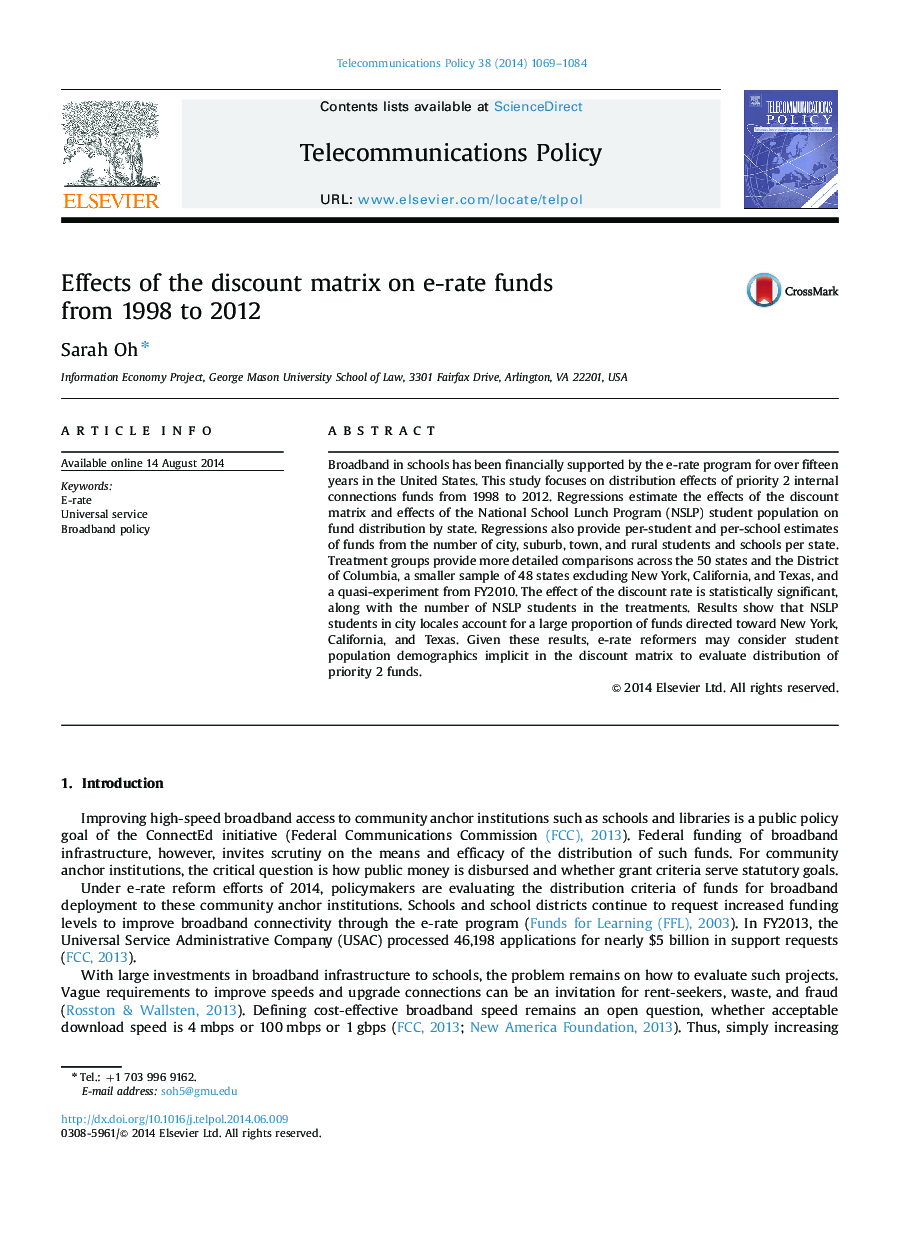| Article ID | Journal | Published Year | Pages | File Type |
|---|---|---|---|---|
| 556481 | Telecommunications Policy | 2014 | 16 Pages |
•e-Rate priority 2 internal connection funds are aggregated by state for 1998–2012.•Effects of discount rates are estimated.•Effects of student populations are estimated.•Effects of urban and rural locale of schools and students are estimated.
Broadband in schools has been financially supported by the e-rate program for over fifteen years in the United States. This study focuses on distribution effects of priority 2 internal connections funds from 1998 to 2012. Regressions estimate the effects of the discount matrix and effects of the National School Lunch Program (NSLP) student population on fund distribution by state. Regressions also provide per-student and per-school estimates of funds from the number of city, suburb, town, and rural students and schools per state. Treatment groups provide more detailed comparisons across the 50 states and the District of Columbia, a smaller sample of 48 states excluding New York, California, and Texas, and a quasi-experiment from FY2010. The effect of the discount rate is statistically significant, along with the number of NSLP students in the treatments. Results show that NSLP students in city locales account for a large proportion of funds directed toward New York, California, and Texas. Given these results, e-rate reformers may consider student population demographics implicit in the discount matrix to evaluate distribution of priority 2 funds.
